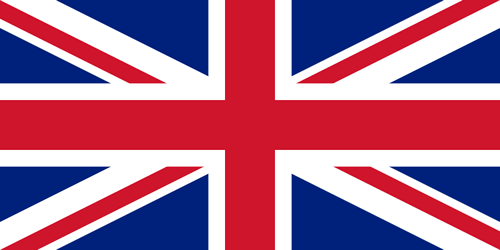20 March 1834: New Zealand chooses its first flag
The flag of the United Tribes

United Tribes of New Zealand flag
New Zealand's first official flag was this one, the flag of the United Tribes. It was selected on 20 March 1834 by 25 chiefs from the far north who, with their followers, had gathered at Waitangi in the Bay of Islands. A number of missionaries, settlers and the commanders of ten British and three American ships were also present. The official British Resident, James Busby, spoke to those gathered and then asked each chief to come forward in turn and select a flag. The son of one of the chiefs recorded the votes. The preferred design, a flag already used by the Church Missionary Society, received 12 out of the 25 votes, with the other two designs receiving 10 and 3 votes, respectively. Busby declared the chosen flag the national flag of New Zealand and had it hoisted on a central flagpole, accompanied by a 21-gun salute from HMS Alligator. The influence of the English missionaries is clear in the use of the St George cross.
Read more about the United Tribes flag
The Union Jack

The Union Jack
Following the signing of the Treaty of Waitangi on 6 February 1840, the Union Jack replaced the Flag of the United Tribes of New Zealand as the official flag of New Zealand. The new Lieutenant-Governor, William Hobson, forcibly removed the United Tribes flag from the Bay of Islands, and had the New Zealand Company's version of the flag hauled down at Port Nicholson.
Some Maori, including Hone Heke, believed that Maori should have the right to fly the United Tribes flag alongside the Union Jack, in recognition of their equal status with the government. Heke's repeated felling of the flagstaff at Kororareka between 1844 and 1846 was a vivid rejection of the Union Jack, which was viewed as a symbol of British power over Maori. Similarly, Tarawhaiti's act of hoisting the United Tribes flag on the island of Ruapuke in 1844 symbolised Maori independence.
Read more about the Union Jack
The current New Zealand flag

New Zealand flag
The New Zealand flag has a royal blue background 'reminiscent of the blue sea and clear sky surrounding us. The stars of the Southern Cross emphasise this country's location in the South Pacific Ocean. The Union Flag gives recognition to our historical foundations and the fact that New Zealand was once a British colony and dominion.'
This became our national flag in June 1902. At the time, we had sent soldiers overseas for the first time to support Britain in the South African (Boer) War.
Read more about the New Zealand flag
How unique is our flag?
One criticism of New Zealand's flag has been that it is too similar to Australia's, which is more widely recognised by people from other countries. There are arguments that this can be a disadvantage when it comes to recognising the brand that is New Zealand.
Those who have talked about the need for a new flag have found it hard to come up with an alternative that has broad appeal. Some of their critics have argued that this seems to be about branding a company as opposed to representing a nation. For others the criticism is based on experiences from the past. In the end there was not enough support to suggest a change was really wanted by a majority of New Zealanders.
Read more about calls for a new flag
Does our current flag represent the New Zealand of the 21st century?
There are some people who believe our current flag represents a link with Britain that is becoming less relevant to New Zealanders in the 21st century. They point to the fact that many people living here have no real connection with Britain. Others highlight what they see as the irrelevance of a flag that represents a former colonial power.
For many Maori in the 19th century, the Union Jack was frequently viewed as a potent symbol of Great Britain's power in New Zealand. In the New Zealand Wars, Maori parties who resisted government forces often devised their own flags to show their independence and counteract the mana of the Union Jack. See some of these other 19th-century flags on Flags used during the New Zealand Wars.
One flag that has become more prominent since the 1990s is the flag of the Maori independence movement, Tino Rangatiratanga.

Tino Rangatiratanga
Designed in 1990 by Hiraina Marsden, Jan Smith and Linda Munn, this was the winning design in a national contest organised by Maori independence organisation, Te Kawariki, to find a Maori flag.
On Waitangi Day 2010 the national Maori flag (tino rangatiratanga flag) flew on the Auckland Harbour Bridge, Parliament, Premier House, the National War Memorial and a number of government departments.
Read more about the national Maori flag
Should it stay or should it go?
Coming up with a design for a new flag is a tricky business. Assuming there was universal agreement that it was time for a change, trying to devise colours and a design that would meet widespread approval would be very difficult.
- What are some of the ways we could find out if New Zealanders really want a new flag?
- What are your own feelings as to whether or not we should change the flag?
- Is having a national flag really that important? Explain your answer.
If a competition was held to design a new flag that reflected New Zealand society now, what would you consider to be the important features to incorporate into this design? What would your flag look like?
- Write a brief describing your proposed design. You must justify each aspect of your design, including the colours or symbols used, for example.
- Sketch your design using the colours and/or symbols selected to provide visual support for your proposal.
